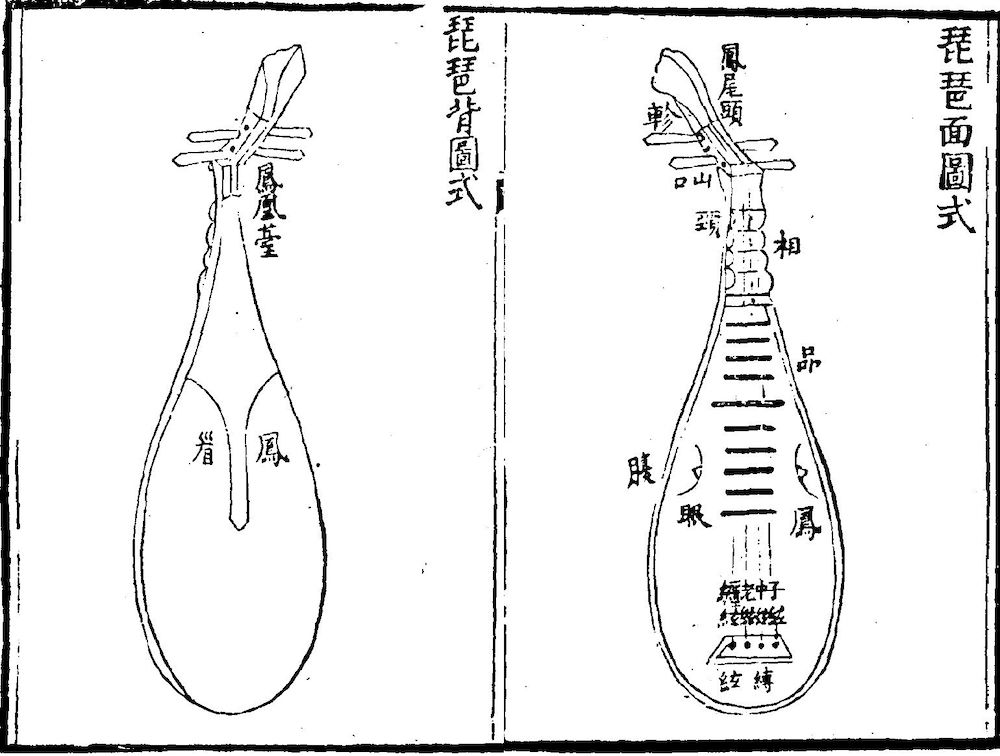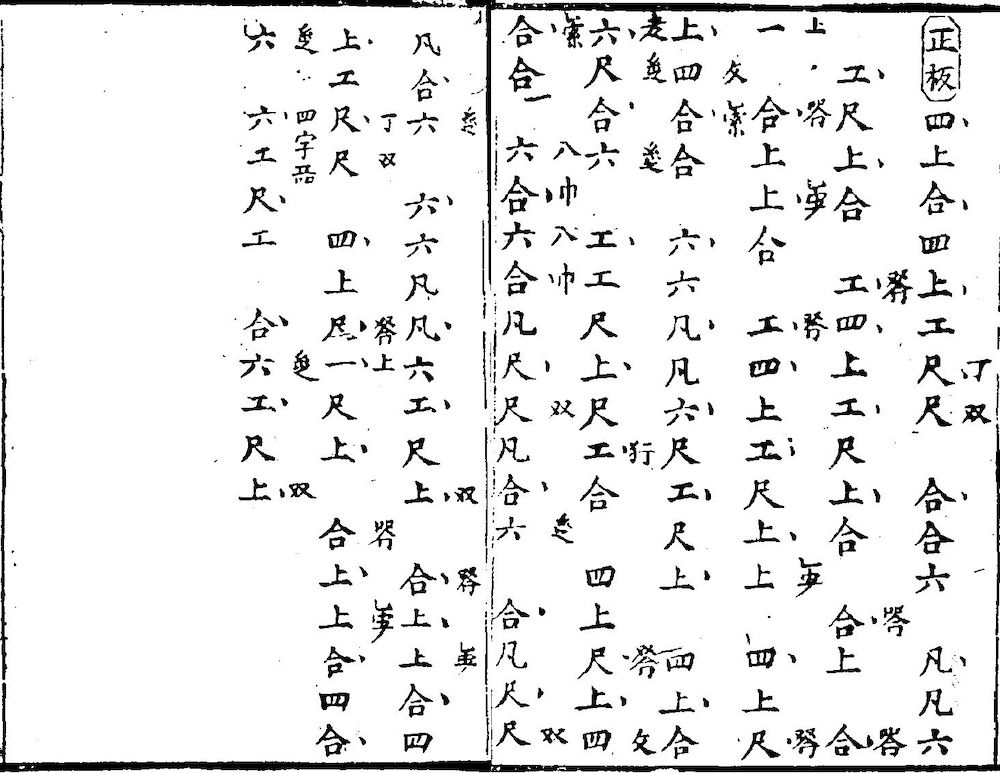Pipapu 琵琶譜 "Tablatures for the lute" is a collection of various tunes for the lute (pipa 琵琶). The 3-juan-long book was compiled during the late Qing period 清 (1644-1911) by the musician Hua Qiuping 華秋蘋 (1784-1859) and includes 62 "lesser airs" (xiaoqu 小曲) and 6 "greater airs" (daqu 大曲). The book was printed in 1818.
Hua Qiuping, actual name Hua Wenbin 華文彬, courtesy name Boya 伯雅, style Qiuping 秋蘋, hailed from Wuxi 無錫, Jiangsu, and was a famous player of the lute and the zither (qin 琴), and equally renowned as his younger brother Hua Wengui 華文桂.
The collection Pipapu is the oldest collection of tunes for this instrument. The first part includes tunes arranged by Wang Junxi 王君錫 (d. 1612) from the province of Zhili 直隸 (modern Hebei), with five "civilian" (wenban 文板) and seven "martial" (wuban 武板) melodies, as well as the "miscellaneous" melodies Pu'an zhou 普庵咒 and the famous tune Shimian maifu 十面埋伏 "Ambushes from ten sides". The second and third juan include tunes arranged by Chen Mufu 陳牧夫 from Zhejiang, with 18 civilian tunes like Sichun 思春 or Zhaojun yuan 昭君怨, and 12 martial tunes like Bubu gao 步步高 or Qiaoshu zhuang 巧梳妝, and 8 tunes of the type suishou baban 隨手八板, like Chun haoguang 春光好 or Feng xian zhu 鳳銜珠, and 14 miscellaneous melodies like Daochui lian 倒垂蓮 or Xiao yue'er gao 小月兒高. The last part includes the five greater airs Jiangjun ling 將軍令, Bawang xiejia 霸王卸甲, Haiqing nahe 海青拿鶴, Yue'er gao 月兒高 and Pu'an zhou 普庵咒.
 |
Image telling the names of each part of a pear-shaped lute (pipa 琵琶). |
 |
Tablature of a zhengban 正板 tune of the collection Yanjing zhengyin 燕京正聲. |
During the compilation process, Hua Qiuping laid stress on the preservation of the traditional melodies. Because it was the first score for the lute, he made use of the signs and symbols commonly used for scores of the zither, but the simplified form (jianzi pu 減字譜) invented by Cao Rou 曹柔 (b. 730) during the mid-Tang period 唐 (618-907). The Pipapu is therefore the standard book on the designation of the strings and various plucking and playing techniques.